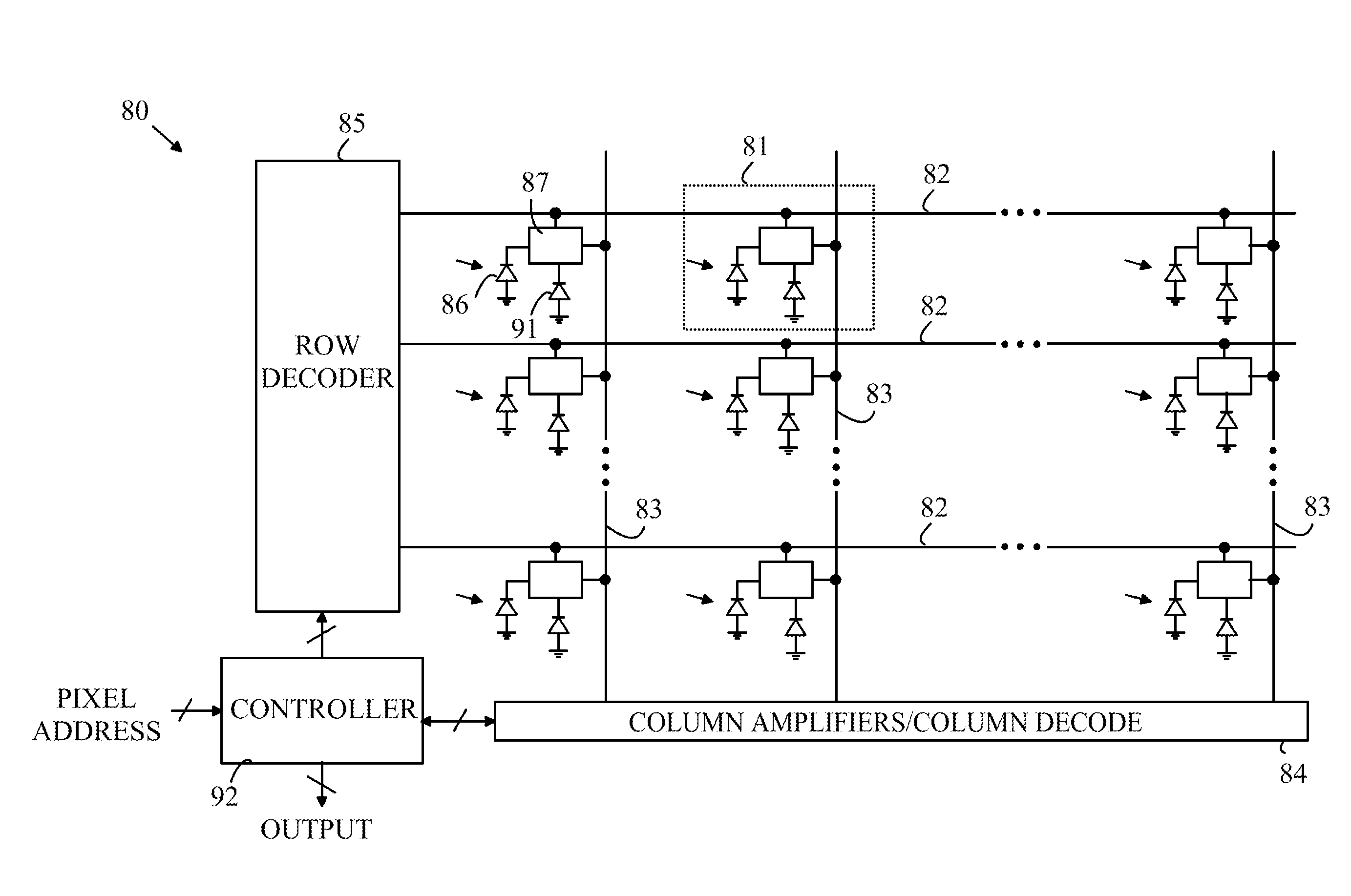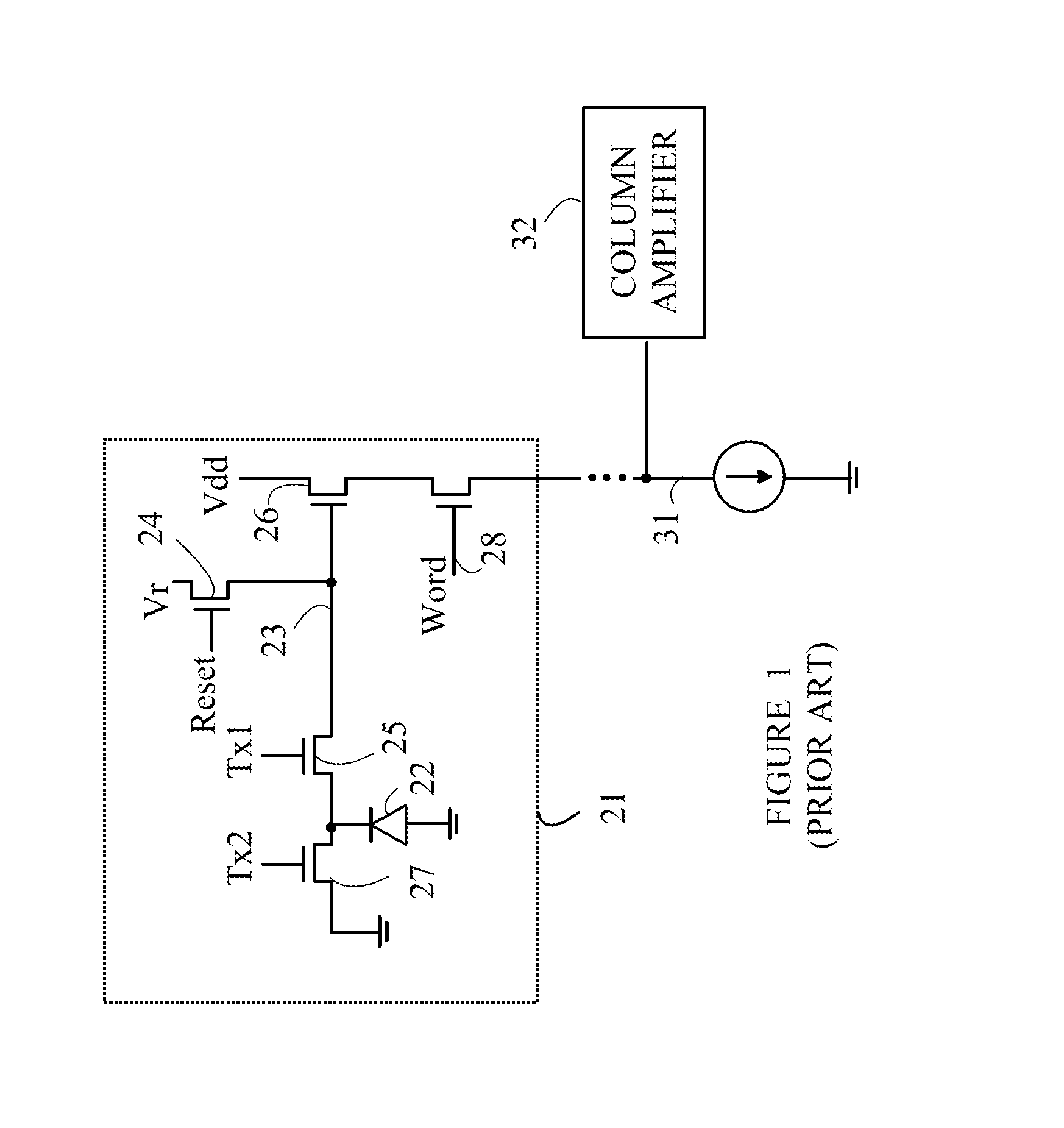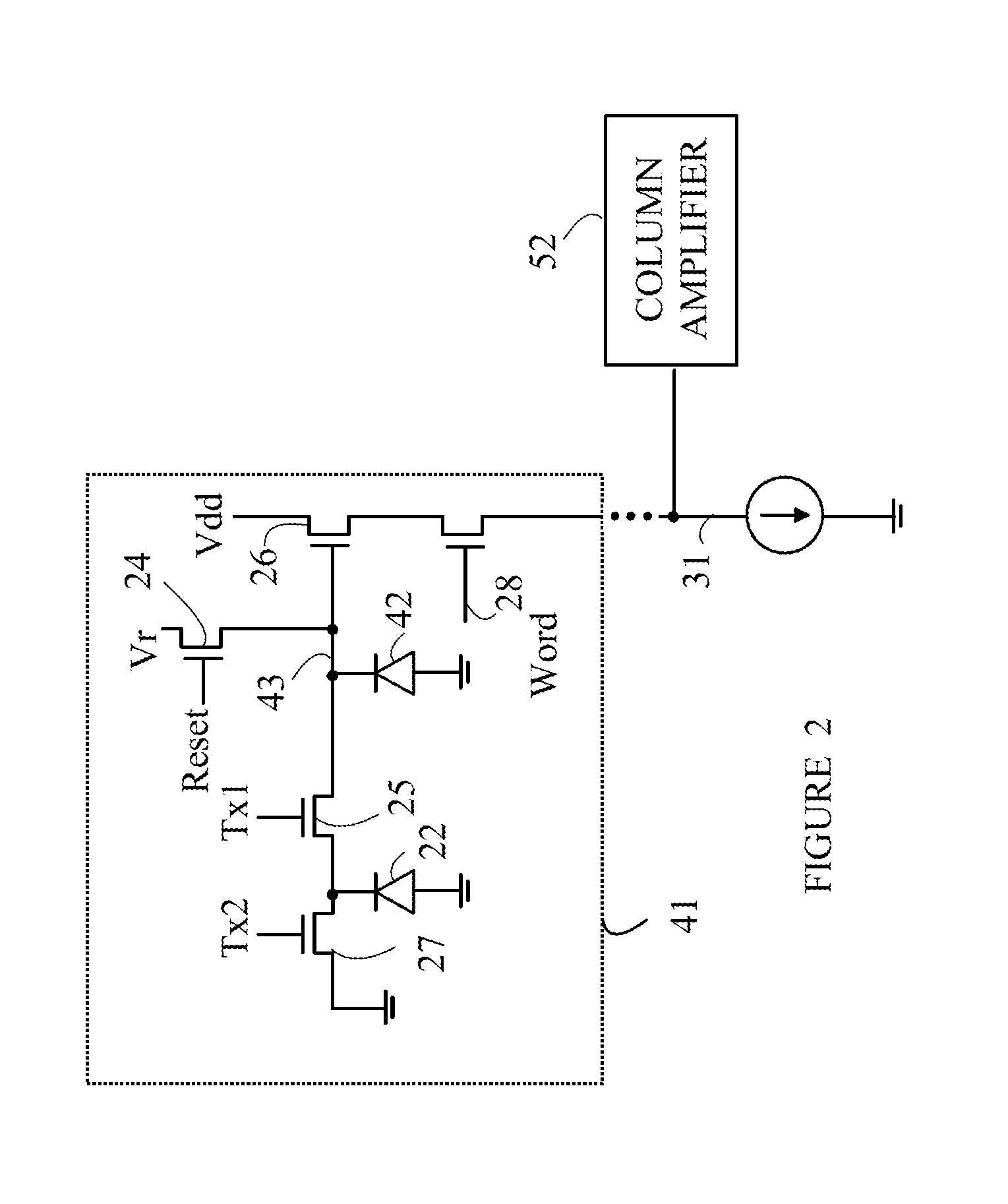Imaging Array with Improved Dynamic Range Utilizing Parasitic Photodiodes
- Summary
- Abstract
- Description
- Claims
- Application Information
AI Technical Summary
Benefits of technology
Problems solved by technology
Method used
Image
Examples
Embodiment Construction
[0016]The manner in which the present invention provides its advantages can be more easily understood with reference to FIG. 1, which is a schematic drawing of a typical prior art pixel sensor in one column of pixel sensors in an imaging array. Pixel sensor 21 includes a photodiode 22 that measures the light intensity at a corresponding pixel in the image. Initially, photodiode 22 is reset by placing gate 25 in a conducting state and connecting floating diffusion node 23 to a reset voltage, Vr. Gate 25 is then closed and photodiode 22 is allowed to accumulate photoelectrons. A potential on gate 27 sets the maximum amount of charge that can be accumulated on photodiode 22. If more charge is accumulated than allowed by the potential on gate 27, the excess charge is shunted to ground through gate 27.
[0017]After photodiode 22 has been exposed, the charge accumulated in photodiode 22 is then measured using a correlated double sampling algorithm. In this algorithm, floating diffusion node...
PUM
 Login to View More
Login to View More Abstract
Description
Claims
Application Information
 Login to View More
Login to View More - R&D
- Intellectual Property
- Life Sciences
- Materials
- Tech Scout
- Unparalleled Data Quality
- Higher Quality Content
- 60% Fewer Hallucinations
Browse by: Latest US Patents, China's latest patents, Technical Efficacy Thesaurus, Application Domain, Technology Topic, Popular Technical Reports.
© 2025 PatSnap. All rights reserved.Legal|Privacy policy|Modern Slavery Act Transparency Statement|Sitemap|About US| Contact US: help@patsnap.com



